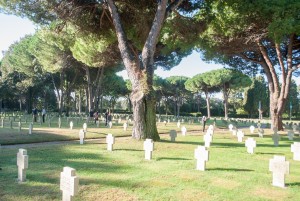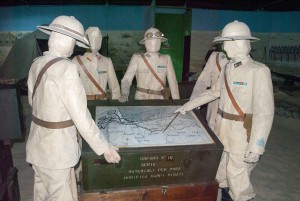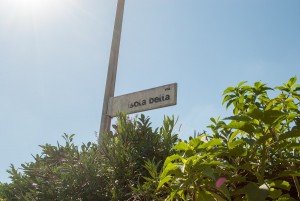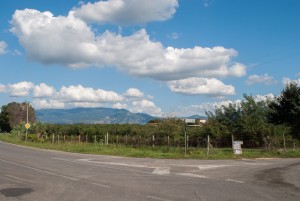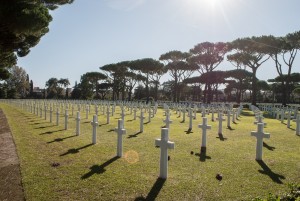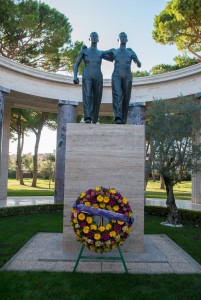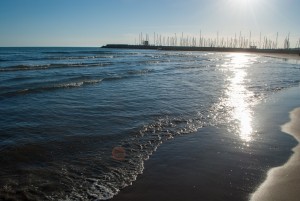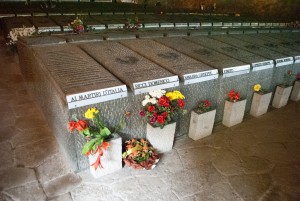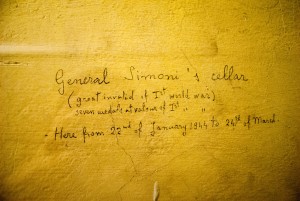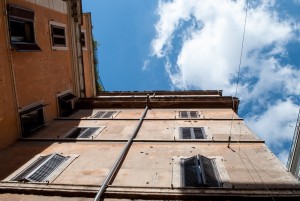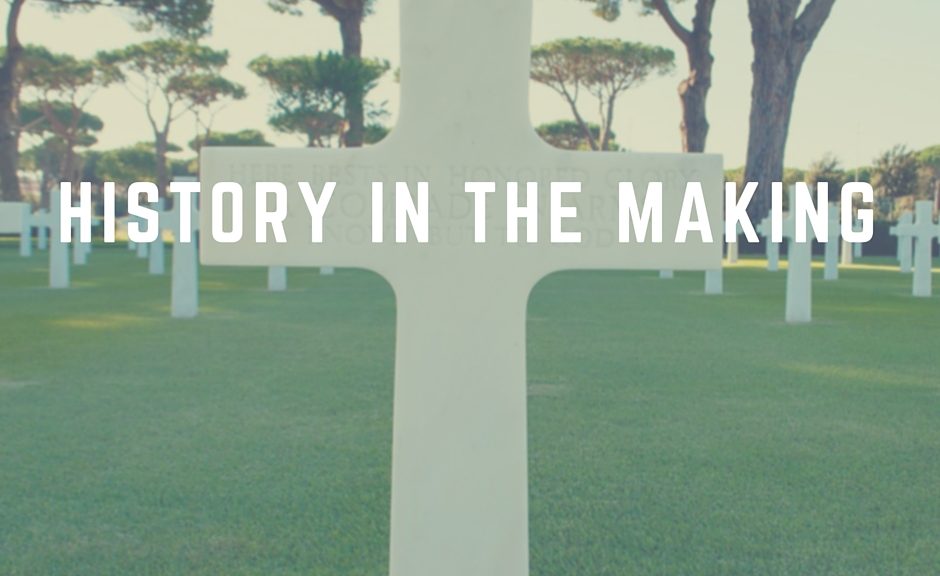
History in the Making
This past weekend I took a trip to 1944.
Utah was the NCAA basketball champion, Pensive won the 70th Kentucky Derby, the Oscar for best picture went to Casablanca, FDR was re-elected President, and Dwight D. Eisenhower was a five star general for the American Army serving as the Supreme Commander of the Allied Forces in Europe as World War II started to wind down.
The United States has been very fortunate not to have had many modern wars fought on domestic soil. Europe, however, is a different story.
For two days, myself and 40 other students witnessed first hand the graves, troop landing sites, battle sites, and museums of WWII. It is one thing to read about these things in history books; it is quite another to see the actual battlefields and read all of the names, ages, and hometowns of the men and women who fought and died. It is a strange and sobering feeling that creeps into your stomach when you realize that you are the same age as they were.
On the first day, we visited Pomezia, the German War Cemetery. The sheer simplicity of the layout, the entrance, and the tombstones perfectly reflect a classic German style. The space is somewhat small for being the final resting place of 2,740 soldiers, but it looks that way because three individuals are buried in each plot. I found two soldiers that I share a birthday with. They died at the young ages of 21 and 22–only one and two years older than me. If that doesn’t make you appreciate the life you have, then I don’t know what will.
Our next stop was the Museo Piana dell Orme. This was no ordinary museum. This museum had life-size replicas of scenes from the war, complete with real artifacts and chilling sound effects. There were authentic uniforms, war vehicles, audio tapes of bombs exploding, men shouting, planes, cars, and tanks. We went scene by scene through the war exactly as it happened in Italy: from the invasion of Sicily in July of 1943, to the Allied landing at Anzio that began in January 1944, and finally to the liberation of Rome on June 4, 1944.
After the museum, we traveled to the site of an actual battle, Isola Bella. While the area is now occupied by houses and farm land, it was once littered with bullets and ash as the Axis forces residing on the hills surrounding the area targeted the Allied powers down below. The only remaining clues that a war was fought there 71 years ago, are two columns that had obvious damage from the conflict. Otherwise, Isola Bella is a now quiet and peaceful street.
It was then time to visit another cemetery. The Sicily Rome American Cemetery is located in Nettuno, just outside of Rome, and is the site for 7,861 American servicemen burials. In contrast to the German cemetery in Pomezia, the Sicily Rome American Cemetery had larger crosses, a fountain, a two room memorial, and only one person buried in each grave space. It was a peaceful and moving tribute to the fallen soldiers.
As a group we laid flowers at the grave of John Burke, a Loyola University of Chicago student who was killed near Cisturna in January of 1944. We also saw and read about others buried at the site: Ellen Ainsworth, a nurse who died while helping patients during a gun fight; Sylvester Antolak, a Medal of Honor recipient, and Henry T. Waskow, whose death was emotionally depicted in a widely-read column written by Ernie Pyle (who died in Japan in 1945).
We placed a wreath beneath the Brothers Statue (one man represents the Navy and the other represents the Army–they symbolize the bond American service men and women have) in the memorial, and were able to lower and fold the American flags as representatives of the John Felice Rome Center. It was an incredibly moving experience, and one I won’t soon forget.
Next on the itinerary was the beach at Nuttuno, close to where the Allies stormed the beach in Anzio. This was a nice change of pace compared to the rest of the day. The sound of waves replaced the loud roar of bombs, and the view of a luminous sunset replaced the visions of wounded and dead soldiers, the destruction of bombs and tombstones. After recounting my trip later to my dad, I found out that my great-great-uncle (my Grandpa’s uncle) had been a part of the landing at Anzio. This was so exciting! My dad said that my great-great-uncle lived through the fighting and made it back to the United States in one piece. I had no idea that I had a personal connection to WWII in Italy.
After the beach it was time for pizza and bed. To say that I was tired would be an understatement.
Day two was spent in Rome as we recounted the events that took place on March 23 and 24, 1944. Our first stop was a neighborhood in the city that houses a memorial called Fosse Ardeatine. This is the location of a massacre of over 330 Italian men on March 24, 1944. The events that occurred on March 23rd lead to the mass killing: A group of Italians bombed a German police force as they marched along a narrow street in Rome called Via Rasella, killing 33. The Germans sought reprisal for the attack: 10 Italians killed for each German killed. You can walk through the underground caves to see where the Italians were shot.
Interestingly enough, the group of Germans responsible for the massacre had never before killed anyone, and so it is said that they were most likely pretty drunk when they shot the Italians. The victims were concealed in the caves when the Germans set off explosives to seal the openings. The bodies were found after the war and given proper burials. Each of the victims had a plot in the large memorial that included their name, age, occupation, and pictures. The eerie silence that surrounded this memorial was chilling.
After Fosse Ardeatine, we went to the Museo della Liberazione. The entire museum was just the three small floors that were the German SS headquarters during the war. Prisoners, and those involved in the resistance of the German occupation in Italy, were imprisoned, interrogated, and even tortured there. Two of the floors were small, windowless rooms that looked like closets. These rooms acted as solitary confinement spaces, where a prisoner would spend hours, or even days, in the room. It was chilling to walk into these rooms and see the carvings the people made on the wall.
The building was abandoned by the Germans when they found out the Allies were going to liberate Rome. They took a lot of important papers (the Germans were incredibly good at keeping records-for instance, all of the people killed in the Fosse Ardeatine massacre were listed by name and checked off when they were apprehended). Many other items in the building were well preserved.
The final stop for day two was Via Rasella. This was the street where the bomb went off on March 23. Our two leaders for the trip, Jim and Phil, (who both attended the JFRC as students), recounted the story of the bombing for us while we walked. After the explosion of nails and other shrapnel, the Germans started firing their weapons at anyone and anything around the site. Their bullets hit houses and buildings along the narrow street. There are still holes in some of the structures today.
What struck me the most during the tour of Via Rasella, was that I had ventured along the same streets two days before, but I was completely unaware of the historical significance. Friday. I decided to venture into the city by myself, partly as a challenge to see if I could navigate my way around, and partly because I was restless and anxious to be in the city center after a long week of classes. I started off by the Vatican and made my way to Via del Corso. I eventually found myself in front of the Trevi Fountain. It was breathtaking to be honest- partly due to the realization that I was standing next to the Trevi Fountain, and partly because there were hundreds of people in that tiny piazza and it was hard to move. Anyway, I then thought I would get to the Spanish Steps and take the metro train back to Balduina and JFRC. However, I was completely lost somewhere in between the Trevi Fountain and the Spanish Steps with no wifi and only a package of blackberries I had picked up at a market earlier. That was when I stumbled upon Via Rasella. Of course I had no idea that it was the site of an infamous bombing that lead to a massacre. During my time living in Rome, I have found that this is the case with most of the city. You walk around and admire the ancient architecture that so naturally blends with the modern tones, then you find out there is a story behind everything. Maybe that story is from the age of Constantine in the fourth century, or maybe it’s from the year 1944 and the end of WWII.
This weekend was an emotional one. Seeing cemeteries, battle sites and museums dedicated to the deadliest and most destructive war of all time definitely stirred my emotions and brought out feelings that I cannot begin to accurately describe. There was pride, mixed with sadness, mixed with wonder. Next weekend will also be a busy one for me because it is the start of Fall Break! We are very fortunate to get nine days off from class to go out and explore. I will be traveling to to Munich, Vienna and Prague!
Ciao! Until next time!
~Amanda
